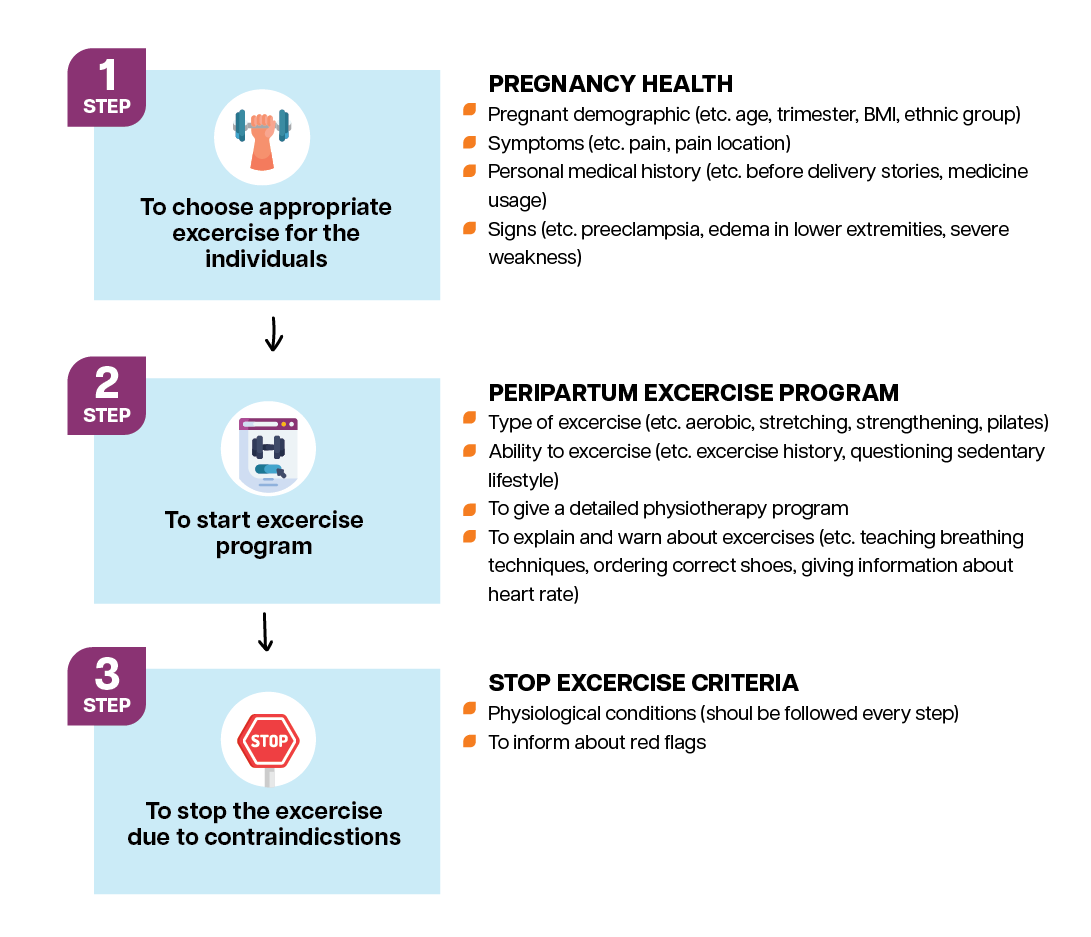Reading material on improving movement analysis and therapy
Exercise selection in pregnant women with low back pain
Pregnancy brings about an increase in body weight and significant changes in the musculoskeletal system, often leading to various discomforts. One of the most commonly reported complaints during pregnancy is low back pain (LBP), with around two-thirds of pregnant women experiencing it, according to Pennic & Liddle [11]. Both pregnancy-related pelvic girdle pain (PGP) and LBP tend to worsen as pregnancy progresses, impacting daily activities, work, and sleep quality, and affecting the overall physical and psychological well-being of women and their families [12].
To address these challenges, physiotherapeutic interventions should consider light strengthening exercises and stretching routines aligned with the recommendations of the American College of Obstetricians and Gynecologists. It’s advised that pregnant women engage in at least 30 minutes of moderate-intensity physical activity daily, spread across 3–5 sessions weekly, as suggested by exercise guidelines for pregnancy. Ideally, pregnant individuals should aim for at least 150 minutes of moderate-intensity aerobic activity weekly, characterized by activities like brisk walking, which elevate heart rate and induce light sweating without impeding normal conversation but preventing singing. This 150-minute target can be achieved through structured 30-minute sessions on 5 days of the week or smaller 10-minute bouts throughout the day. For women starting from a sedentary lifestyle, it’s recommended to gradually increase activity, starting with as little as 5 minutes per day and adding 5 minutes weekly until reaching a daily capacity of 30 minutes [13].
For individuals experiencing lumbopelvic pain, there is moderate-quality evidence suggesting that engaging in an exercise regimen lasting 8 to 20 weeks can lower the likelihood of experiencing pain. Additionally, low-quality evidence indicates that such exercises can notably enhance overall functionality. Physiotherapy techniques, including stretching exercises, are advocated for their ability to enhance flexibility and prevent injuries. Recommendations for a 20-minute stretching routine emphasize focusing on muscle and joint flexibility. This regimen involves a series of stretches targeting major muscle groups, spanning from the neck and arms to the upper and lower torso. The routine is evenly divided, with 10 minutes allocated to upper body stretches and 10 minutes to lower body stretches. These stretches can be performed in either a seated position or on hands and knees, utilizing a Pilates ball for support. It is emphasized that pregnant individuals should stretch gently, breathing normally and avoiding overexertion, ensuring stretches are performed to the point of mild resistance.
Several important considerations must be taken into account when engaging in exercise. It is crucial to avoid tight clothing and select appropriate footwear tailored to the specific activity, ensuring traction and stability. Incorporating breaks between exercises, practicing deep breathing techniques, regulating fluid intake, and maintaining a heart rate below 140 beats per minute are all recommended practices. Prolonged supine positions should be avoided, and participation in contact sports such as boxing, skiing, and water skiing is discouraged due to increased risk of injury. Abdominal exercises should be modified to prevent excessive strain on the rectus abdominis muscle, particularly due to pressure from the uterus, with seated flexion exercises being preferable to mitigate this risk.
During pregnancy, adhere to the FITT guidelines for optimal exercise regimen:
Frequency: Engage in aerobic activities for at least 3 days a week and dedicate 2-3 non-consecutive days per week to resistance exercises.
Intensity: Aim for moderate-intensity aerobic exercises, scoring between 12-13 on the Borg scale. For resistance activities, work to a point of moderate fatigue, typically achieved through 8-10 reps or 12-15 reps. Start with lighter weights and gradually increase.
Time: Allocate 30 minutes to moderate-intensity aerobic activities and perform 2-3 sets of resistance exercises targeting major muscle groups. Beginners may start with 1 set and advance gradually.
Type: Opt for exercises that involve large muscle groups in a continuous rhythmic manner, ensuring safety and effectiveness. Suitable options include aerobic exercises like walking, hiking, jogging/running, aerobic dance, swimming, cycling, rowing, cross-country skiing, skating, dancing, and rope skipping. Be cautious with activities that pose a risk of falls.
Regardless of one’s level of physical fitness, it is imperative to remain vigilant for the following cautionary indicators during physical exertion. In the event of experiencing any of these manifestations, it is strongly recommended to promptly cease the exercise and seek consultation with an obstetrician-gynecologist (OB-GYN):
Hemorrhage emanating from the vaginal canal.
Lightheadedness or presyncope.
Dyspnea prior to the physical activity.
Anginal discomfort in the chest.
Cephalalgia.
Myasthenic muscular debility.
Occurrence of discomfort, tenderness, or edema in the calf muscles.
Consistent and painful contractions of the uterine musculature.



Leave a Reply
Want to join the discussion?Feel free to contribute!